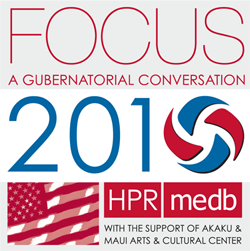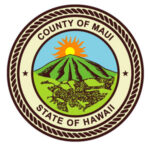 Focus 2010: A Gubernatorial Conversation will be held on October 6, 2010 and you are invited you to participate in this important forum!
Focus 2010: A Gubernatorial Conversation will be held on October 6, 2010 and you are invited you to participate in this important forum!
The event is presented by Maui Economic Development Board (MEDB) and Hawaii Public Radio (HPR) with support from Akaku Maui Community Television, the Maui Arts & Cultural Center, and the UH-Maui College. This forum will be a dynamic discussion between gubernatorial candidates of the two major parties.
MEDB will focus on topics that matter to our community, and will align those questions with the strategies developed through the Focus Maui Nui process:
- Improve education
- Protect the natural environment and address water needs
- Address infrastructure challenges, particularly housing and transportation
- Adopt targeted economic development strategies
- Preserve local culture and traditions, and address human needs
The 90-minute forum will begin at 6:30 pm and will be moderated by Kayla Rosenfeld, News Director for Hawaii Public Radio. The program will be broadcast live on Akaku Channels 52, 53, 54; the HPR stations of KHPR (88.1 FM), KKUA (90.7 FM) and KANO (91.1 FM); Skype via www.medb.org and www.akaku.org; with live audio streaming on www.hawaiipublicradio.org.
We encourage you to submit a question to the candidates by leaving a comment on this blog post or through one of the channels listed below. Video or written questions are welcome. Deadline for questions is September 24. Every effort will be made to ask the candidates the full range of questions received, in addition, all questions will be submitted to the candidates for their own follow-up.
Exercise your voice. It’s your future.
All the ways people can submit their questions:
Facebook: http://www.facebook.com/focusmauinui
Twitter: @FocusMauiNui (http://twitter.com/focusmauinui)
Email: info@focusmauinui.com
Call: 808-875-2300
Fax: (808) 879-0011
Mail: Focus Maui Nui, c/o Maui Economic Development Board; 1305 N. Holopono Street, Suite 1; Kihei, Maui, HI 96753
